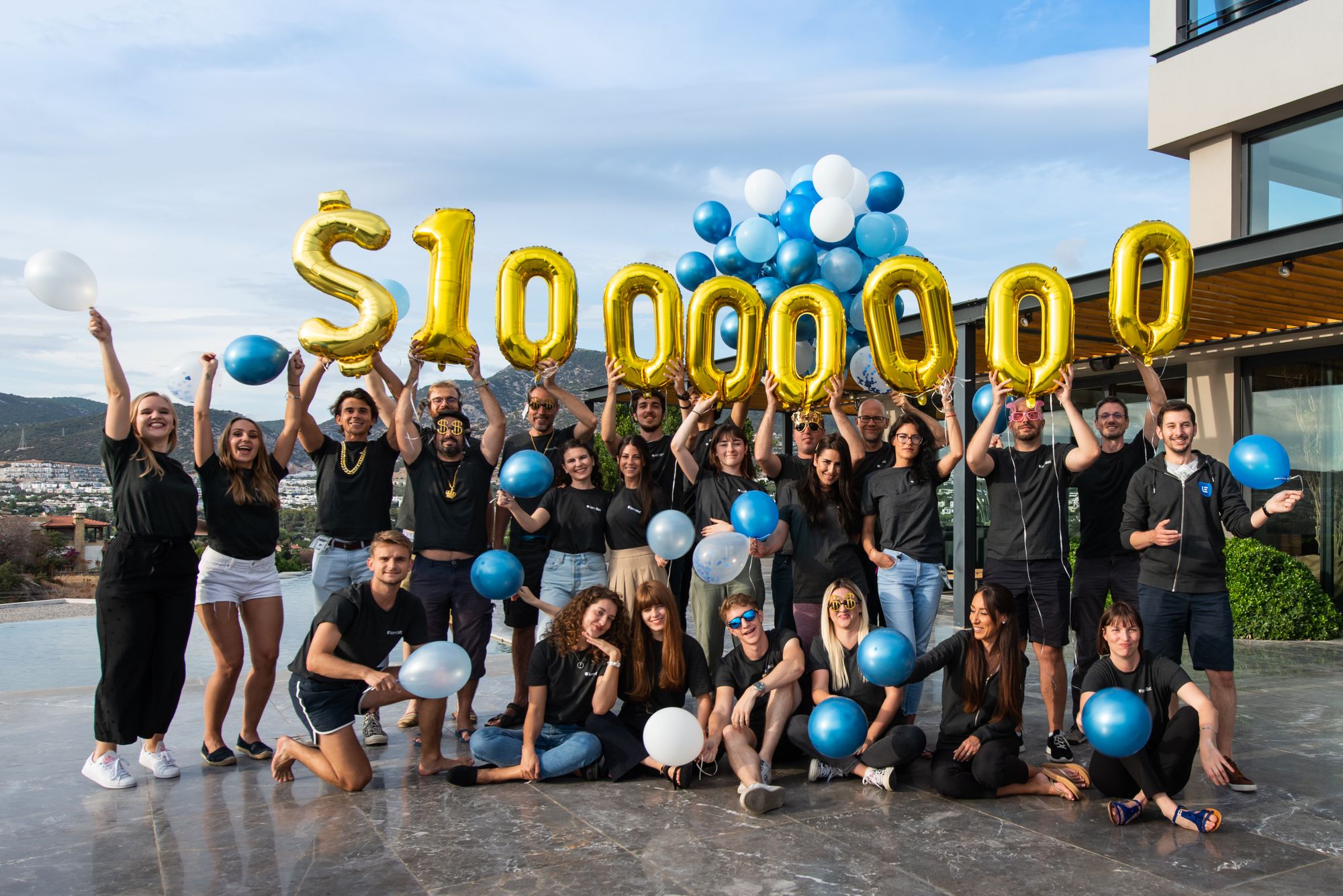In January 2018 my two technical co-founders and I decided
to start our company with $1,000.
At that time, everyone was telling us that reaching $1,000,000 in ARR was unthinkable.
The market was way too competitive, we didn't raise any funds, and we only had $1,000...
So to us, reaching $10,000,000 in ARR at that time was simply impossible.
Yet, we got started...
4 months later, we had our first paying customer.
2 years after that, we reached $1,000,000 in ARR.
1.5 years after that crazy milestone, we reached the impossible: $10,000,000 in ARR. All of that with $0 raised.
How exactly did we grow from $0 to $10,000,000 in ARR without any funding?
How did we almost kill the company (twice)?
What is the one mistake I wished we didn't make?
How do we plan to build a billion dollar company in the next 4 years?
That's the topic of the article 👇
Note: this article is based on my own learnings and failures. It's not a recipe to success: what worked for us might not work for your company. If this article helped you to get new ideas or taught you something, then my job would be done ❤️
How exactly did we grow to $10,000,000 in ARR without any funding?
In my previous articles, I detailed the key things that we put in place to grow during our different stages.
If there's one thing I've realized, is that the fastest growing companies don't focus on the latest hacks. They base their growth on the basic things. And they do it extremely well...
The key to reach the $10,000,000 in ARR without spending $1 on ads was to focus on 1 thing:
The growth circle of love.
The growth circle of love
You're probably thinking "what the fuck is this french guy talking about" 😅
Worry no more my friend - I got you! To me, growth is all about love. The more passionate you are about what you do, the easier it will be for you to excel at it.
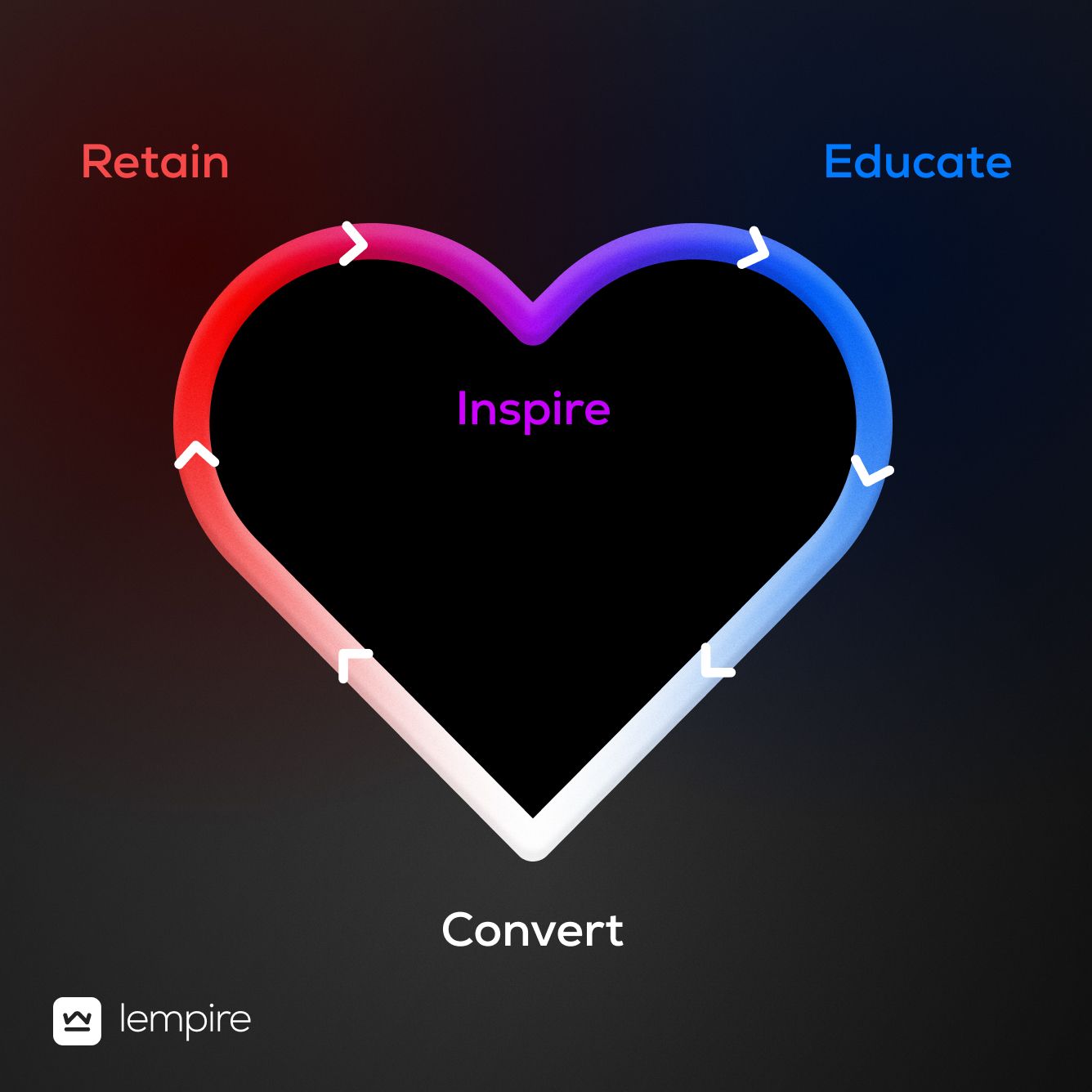
At the center of the heart, you have what I call the "Inspire" part. It's the part that should motivate you to take action - the essence of love.
Then, moving to the right you have the "Educate" part. Love is all about learning. Sharing knowledge with people is the best way to strengthen a relationship and build trust.
Going down, you'll find the "Convert" part. This is when the relationships you've built are so strong that people decide to take action and purchase something from you (in our case, a monthly subscription to our SaaS).
Finally, on the upper left comes the most important part of all: Retention. Like all love stories, the most beautiful ones are the ones that last the longest. Retention is all about making your customers happy and successful.
Now let's dive into these 4 components of the growth circle of love to understand what we've done for each one of them.
Inspire
That's the part where we create content that is in line with our mission: to help 1,000,000 entrepreneurs worldwide launch and grow a profitable business.
We want this content to be fully transparent in order to show the ups and downs of the life of an entrepreneur.
So we decided that this content will be produced exclusively by my two technical co-founders and me.
The content includes transparent articles with actionable tips that we wrote at each stage of our business:
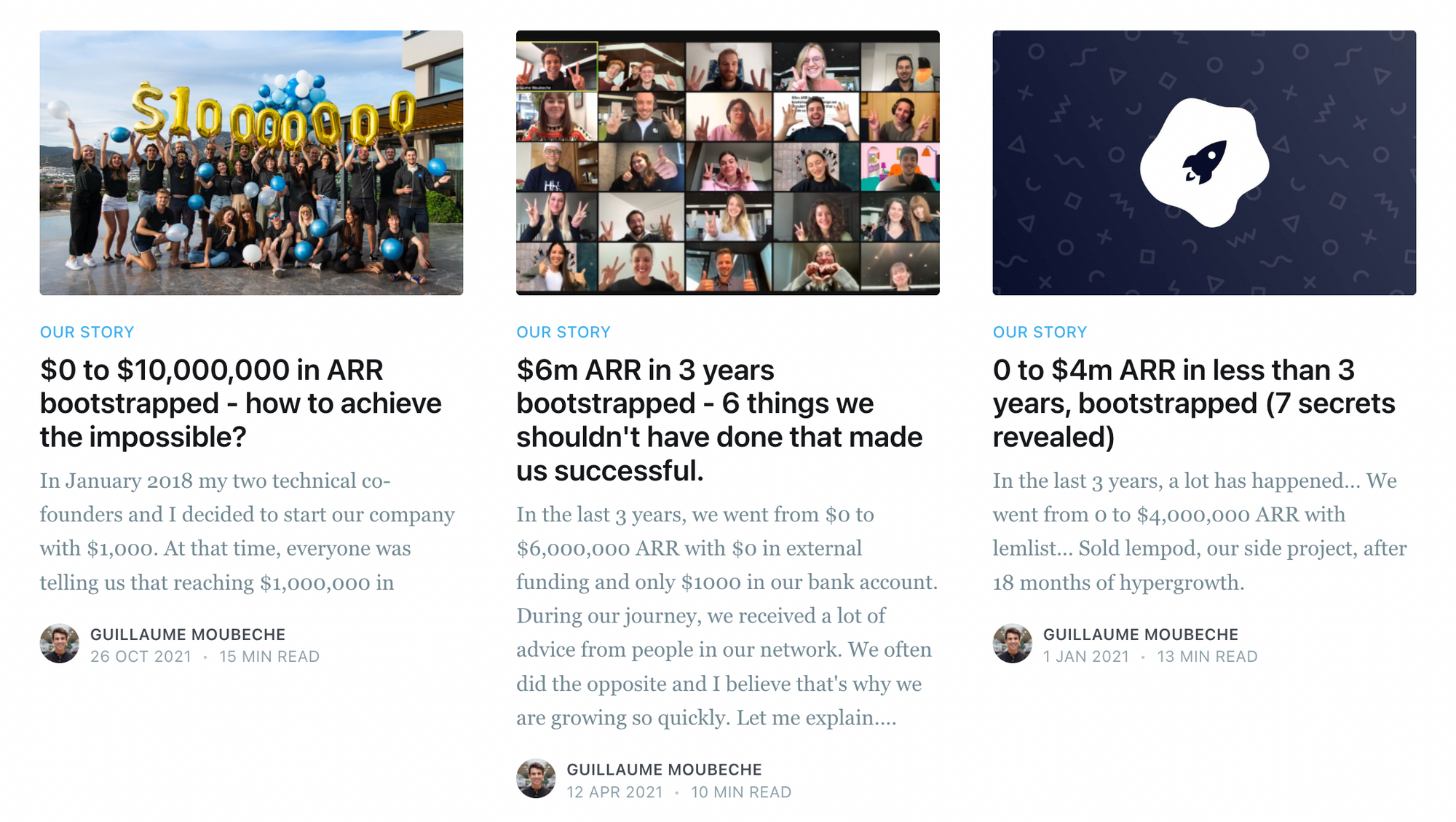
My YouTube channel is aimed at ambitious entrepreneurs or people who are passionate about entrepreneurship. The idea is to post vlogs on a weekly basis about our successes and failures. My goal is to provide as many actionable tips as possible for bootstrapped founders while at the same time sharing each step of the journey.
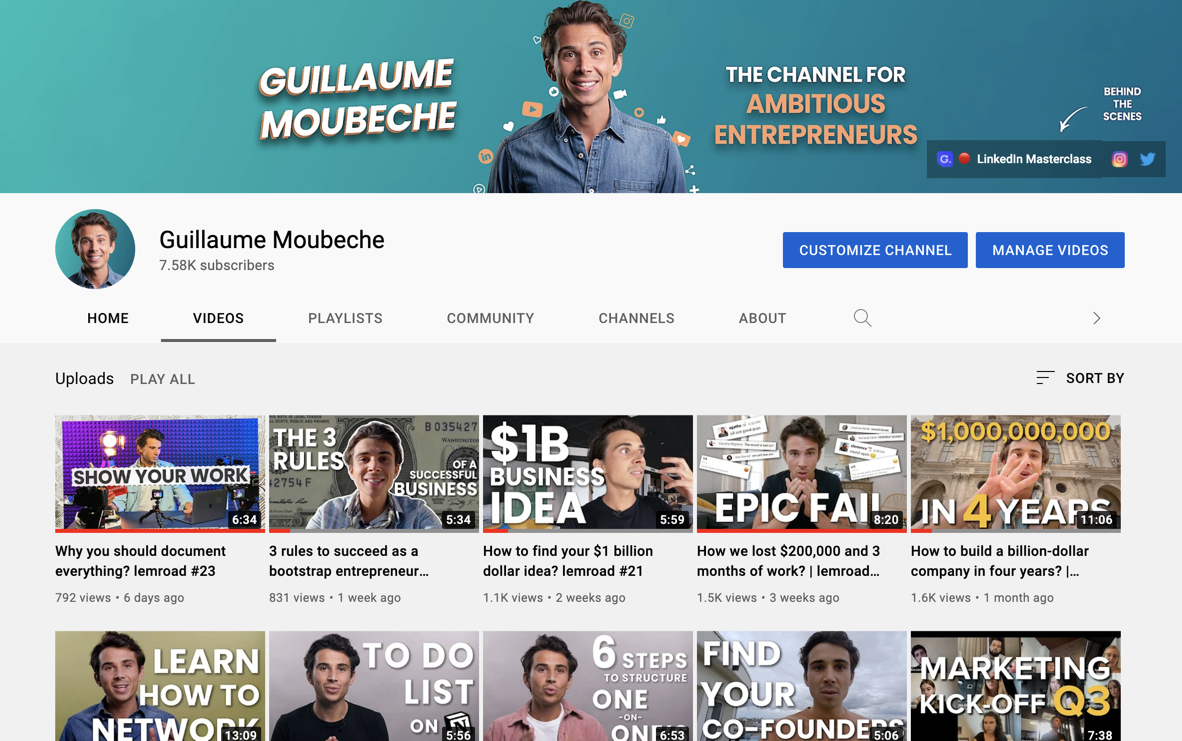
Posts on LinkedIn and Twitter (5 times per week) about startup tips, the ups and downs of the life of an entrepreneur, etc.
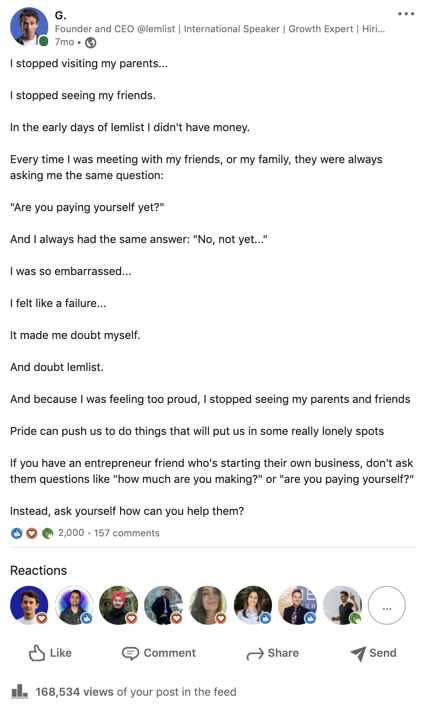
A docuseries about how it all started (live in Q1, 2022)
As you probably guessed, the more you document things and build an audience the more opportunities you will get.
It opened massive opportunities to us, such as getting on hundreds of podcasts and interviews and also inspire people from very different audiences:
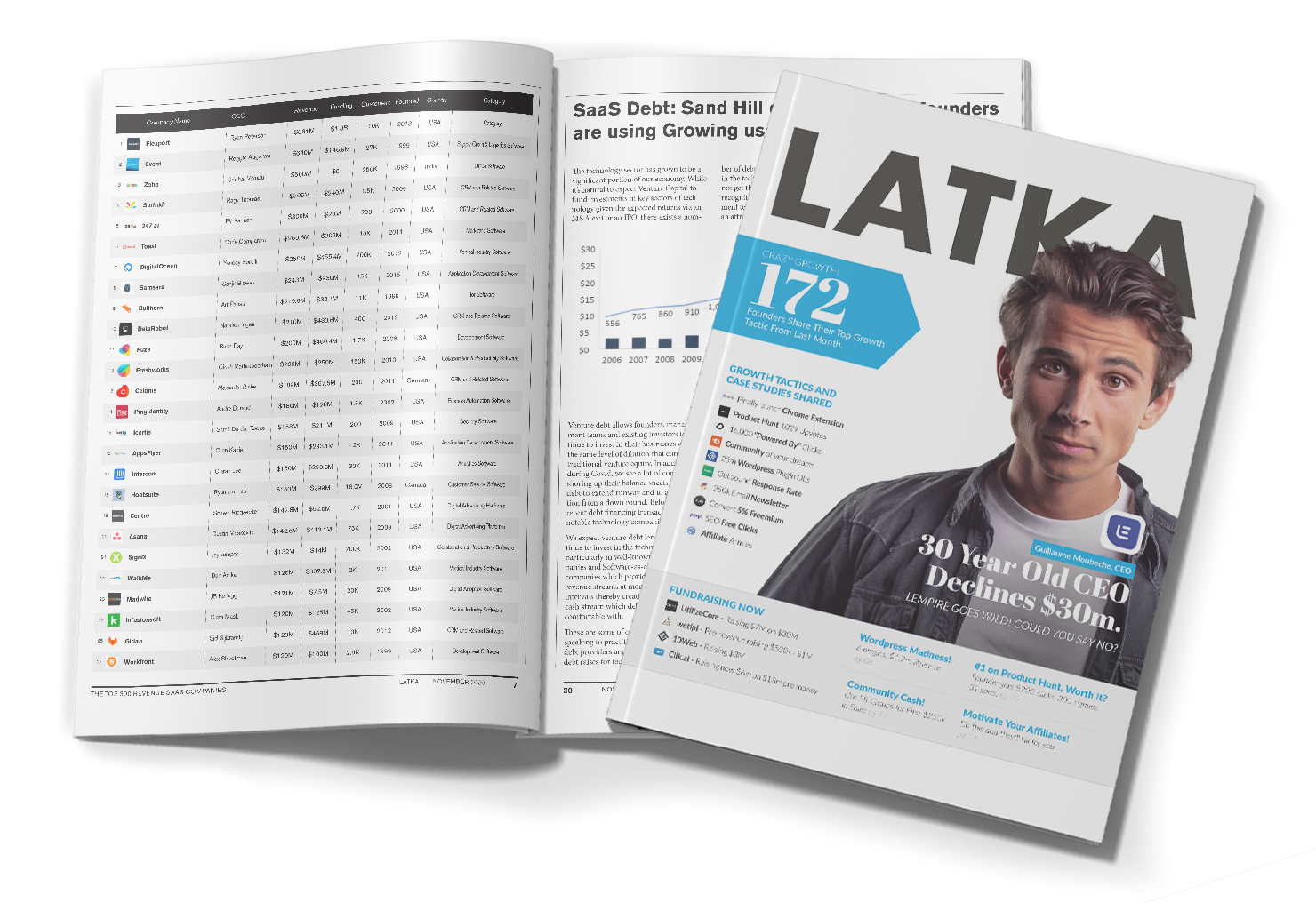
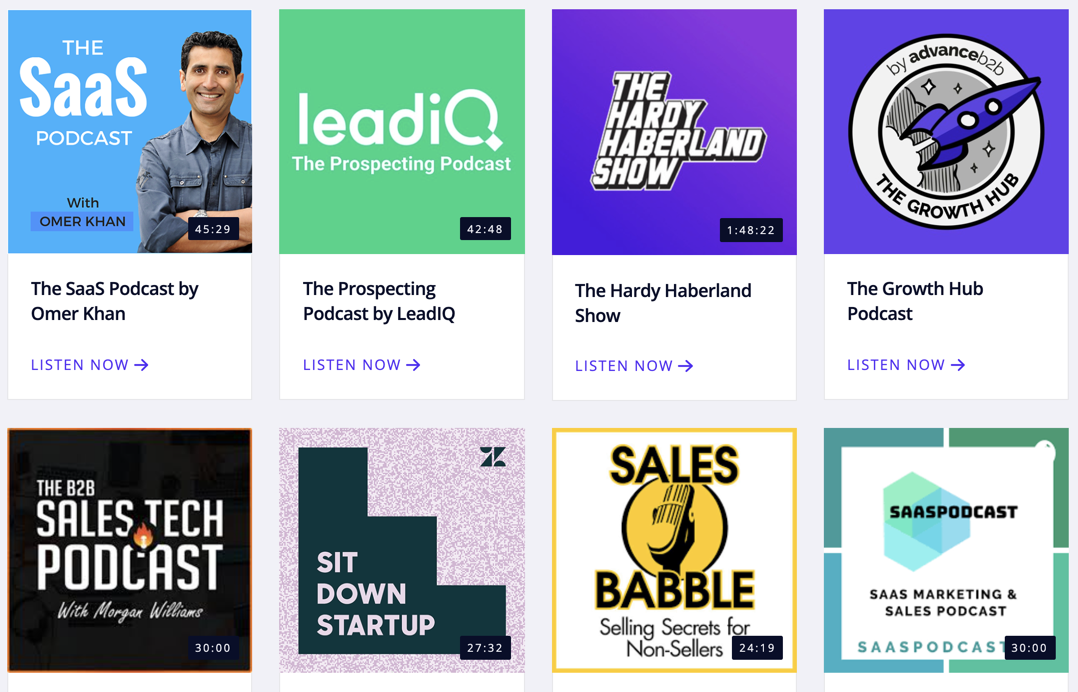
In my opinion, this part of documenting is a must for any founder.
Why?
As a founder, your role is to do 2 things:
1- have the best vision possible of where you want your business to go
2- attract the best talents possible
Documenting everything allows me to have a lot of clarity on the business. It forces me to put complex ideas in writing or directly in video which is the best way to grow my sense of certainty about some topics.
On top of it, we are all real doers in our team. We keep our entire organization as lean as possible and are true believers of the mantra "lead by example".
By showing what we do and how we do it, we've been attracting a really talented team and it's super exciting to work in such an environment.
Educate
Your only focus should be on the value you deliver to your audience.
It took me a lot of time to understand that building a successful B2B business comes down to something very simple:
If you want to make money you can either help people save money or help them make more money.
Since lemlist is a multichannel sales automation platform - we fall in the second category.
That's why we spent the last 3.5 years focusing on our users' success. We did it through 7 pillars. Each pillar focuses on how we can make our users more successful.
1- We build the biggest community around sales automation called "lemlist family" - in this community people can ask their questions, share their learnings, and help each other grow their business:
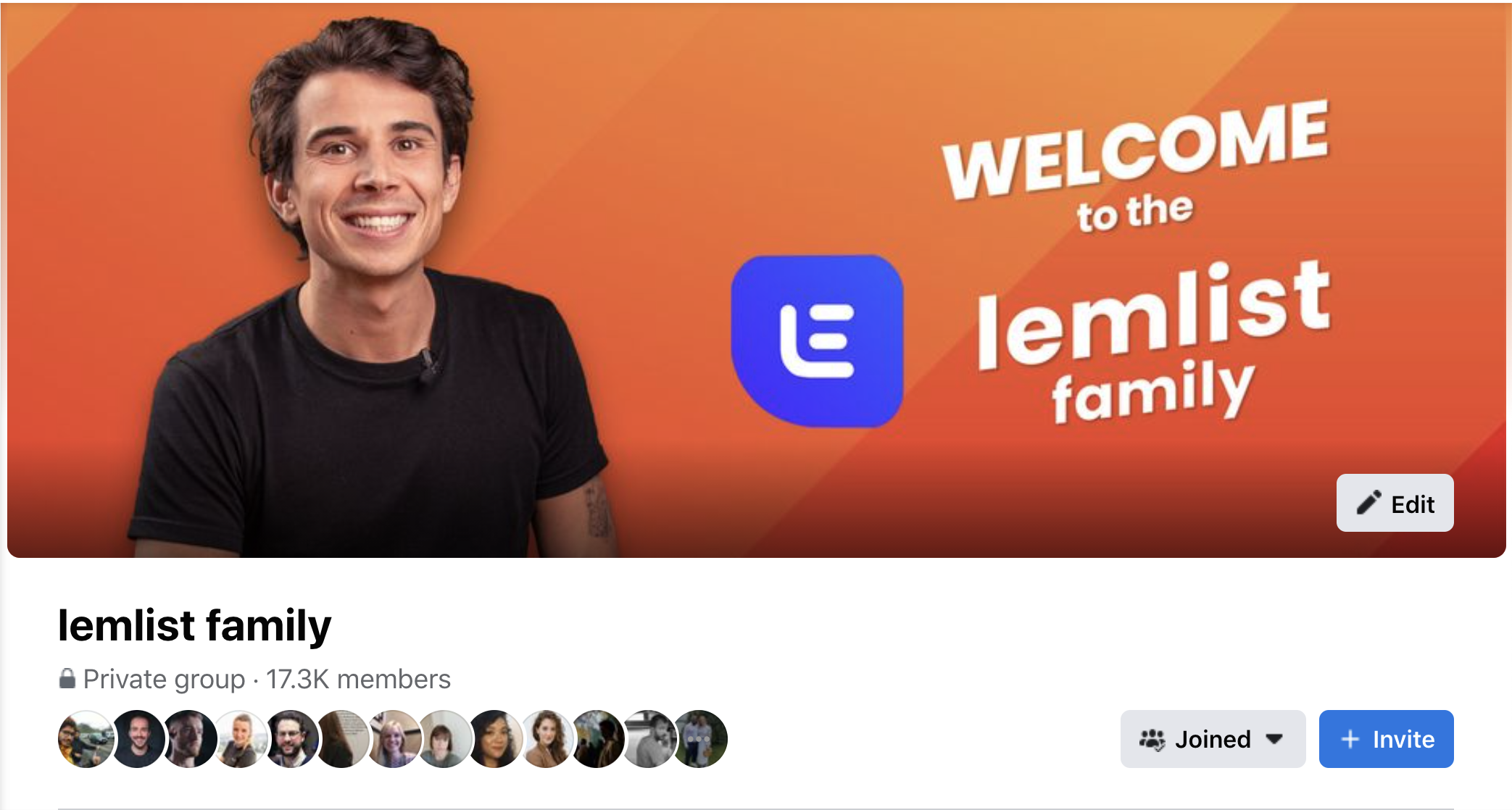
2- We created the best place to find sales prospecting campaign examples. Every single week we reward and showcase 1 lemlister (lemlist user) for the results they get from their sales prospecting campaigns.
It's a real win-win, because being a lemlister of the week offers a lot of visibility, and for us, it's a great way to showcase unique and actionable content with REAL RESULTS.
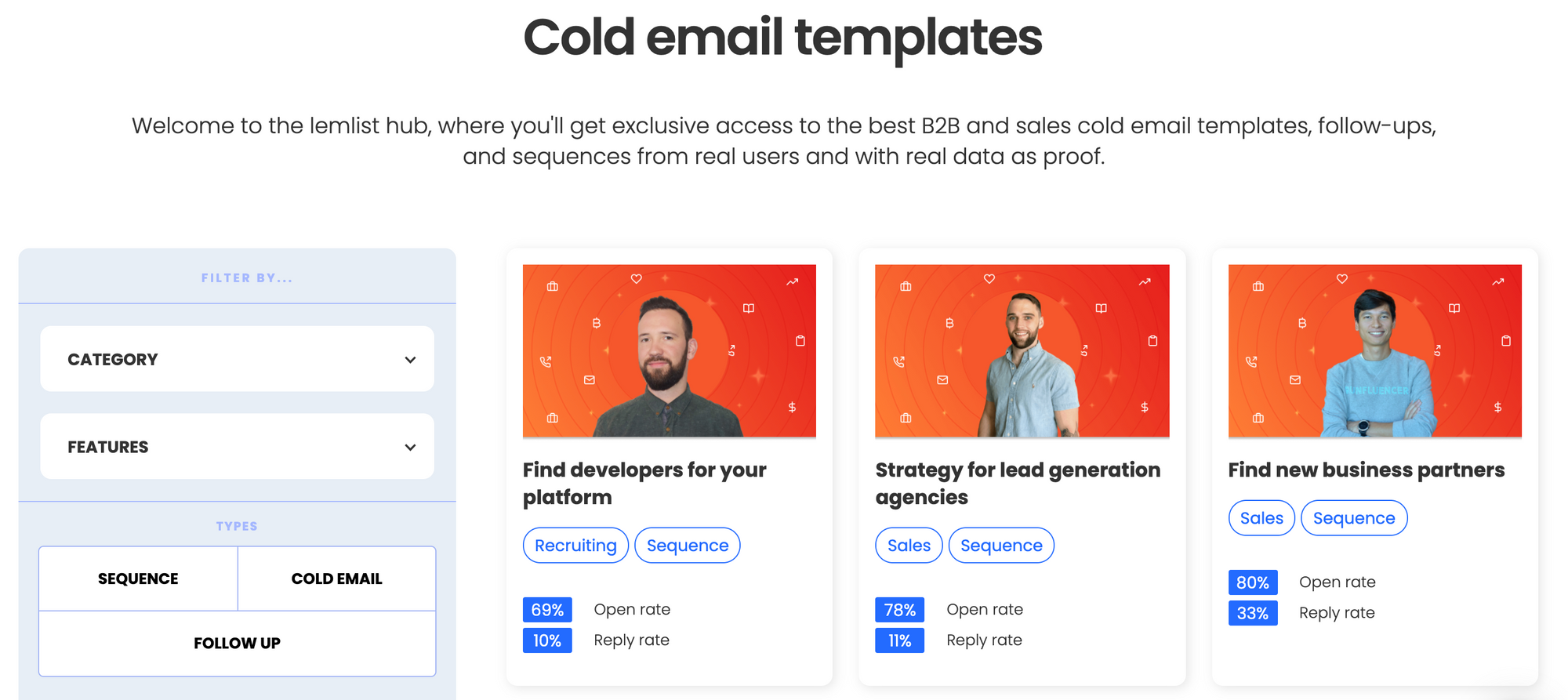
3- We've organized 10s of webinars with top international sales leaders like John Barrows, Morgan Ingram, Aaron Ross, Jill Rowley etc... These webinars got thousands of views and provide tons of value.
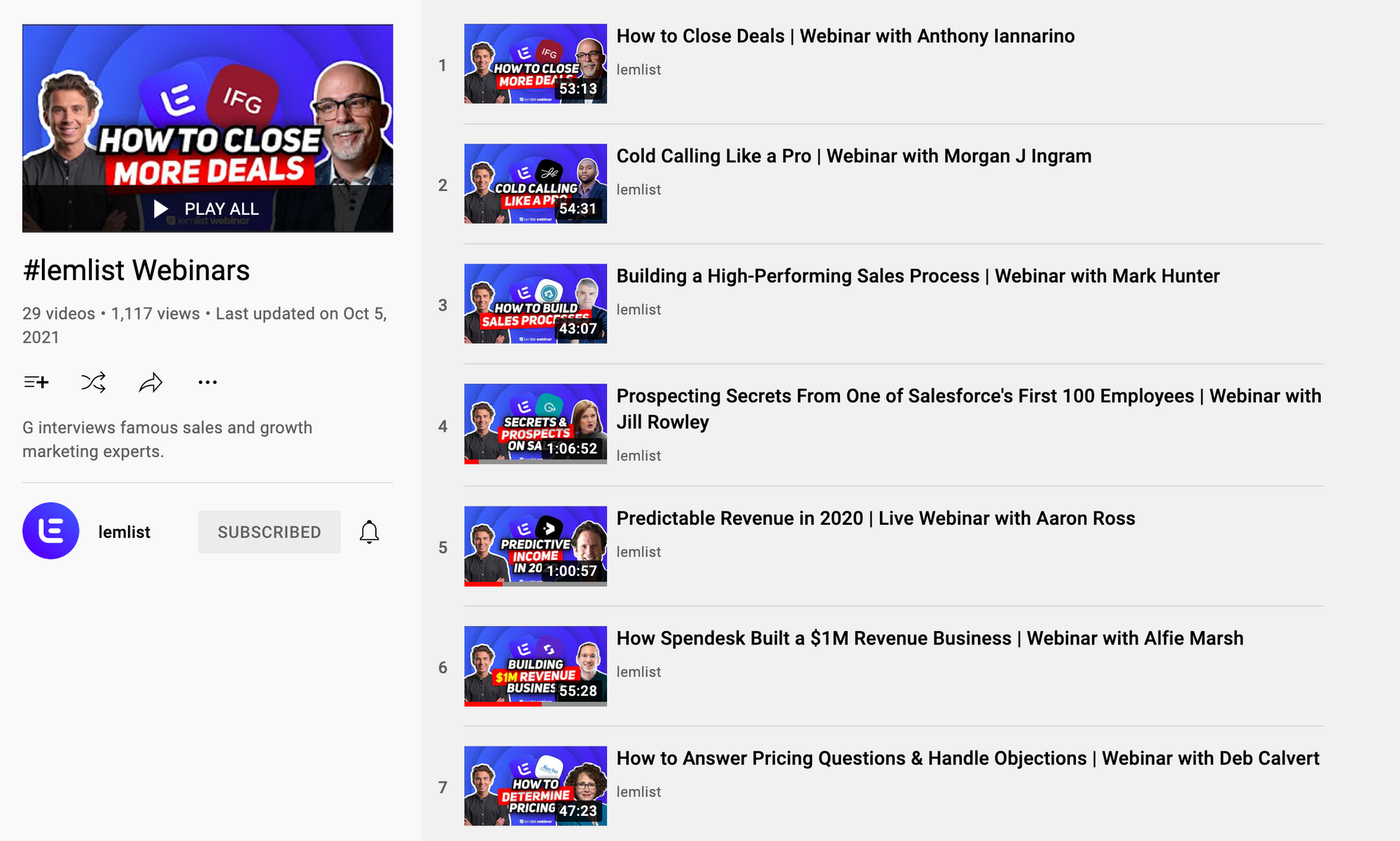
4- Simon and Nadja launched a YouTube channel in order to show what their day to day work looks like as sales reps in fast growing scale-up. They show exactly how to do sales prospecting and deliver in-depth views on what they are actually doing, they share their results and learnings along the way.
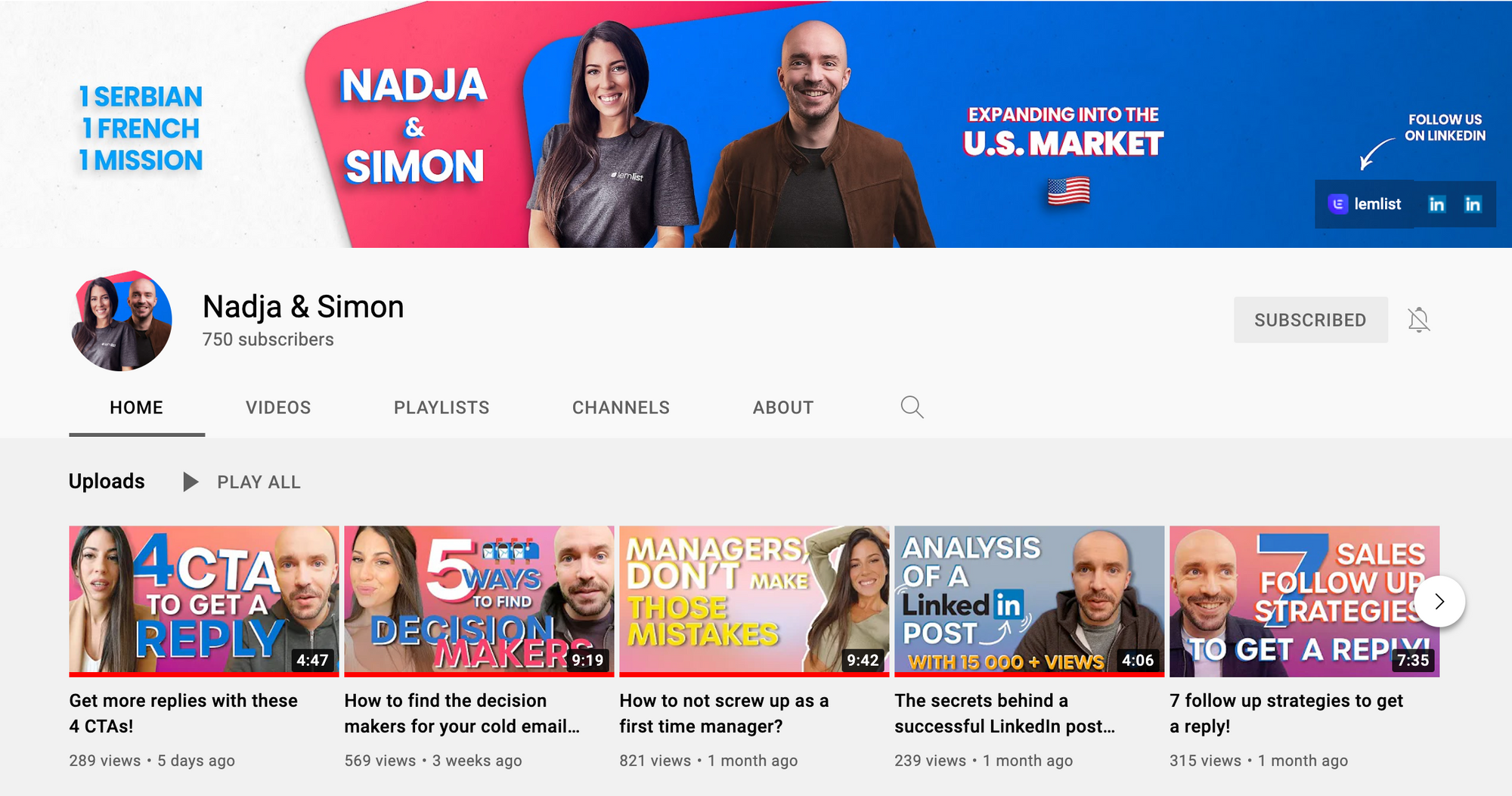
5- We invested in our own YouTube channel in order to deliver really actionable tips about the product and about cold email in general.
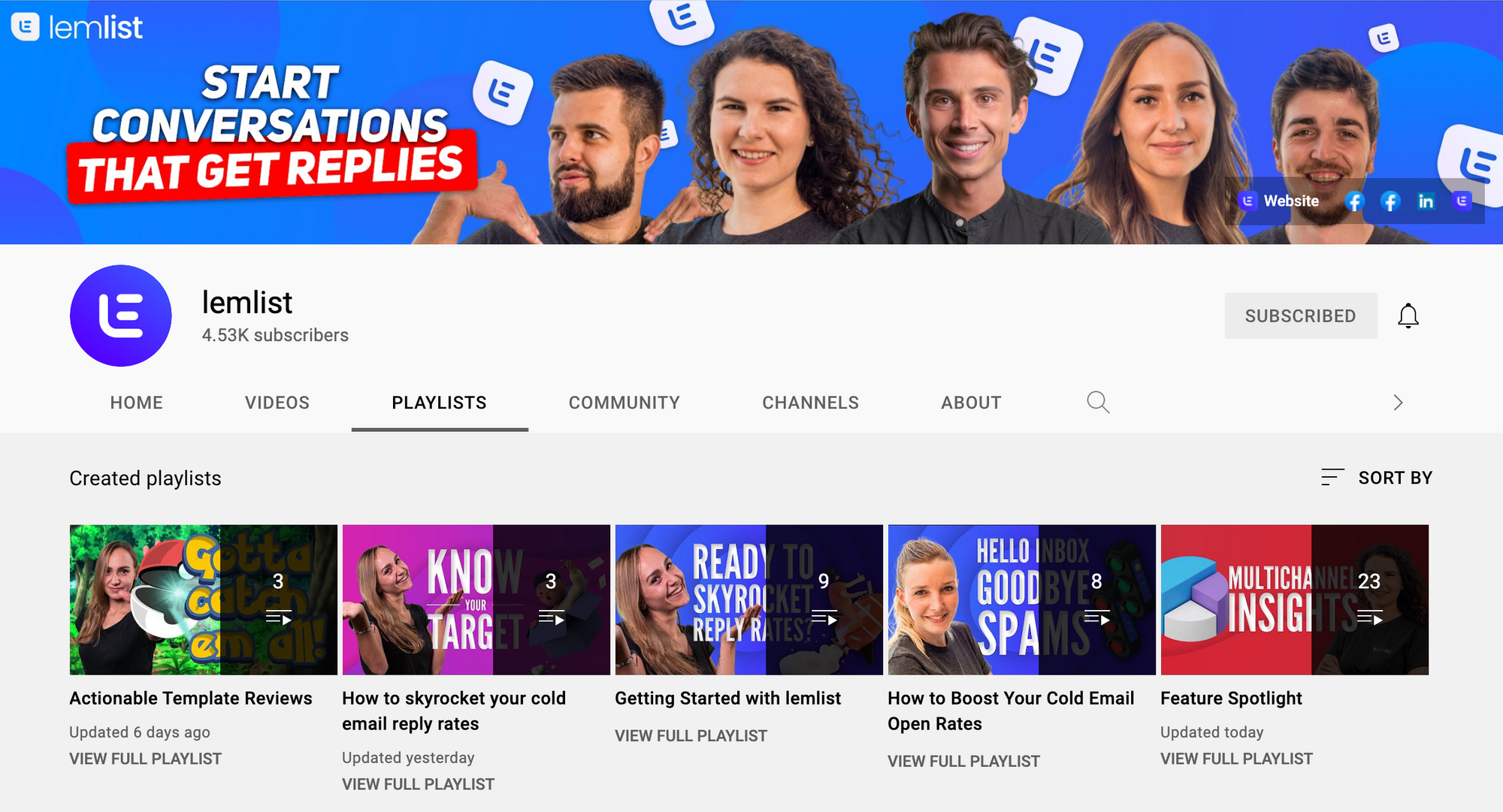
6- We wrote the most actionable articles possible trying to answer all the questions our users were having. Most of the topics come from the questions we see in the Facebook community.
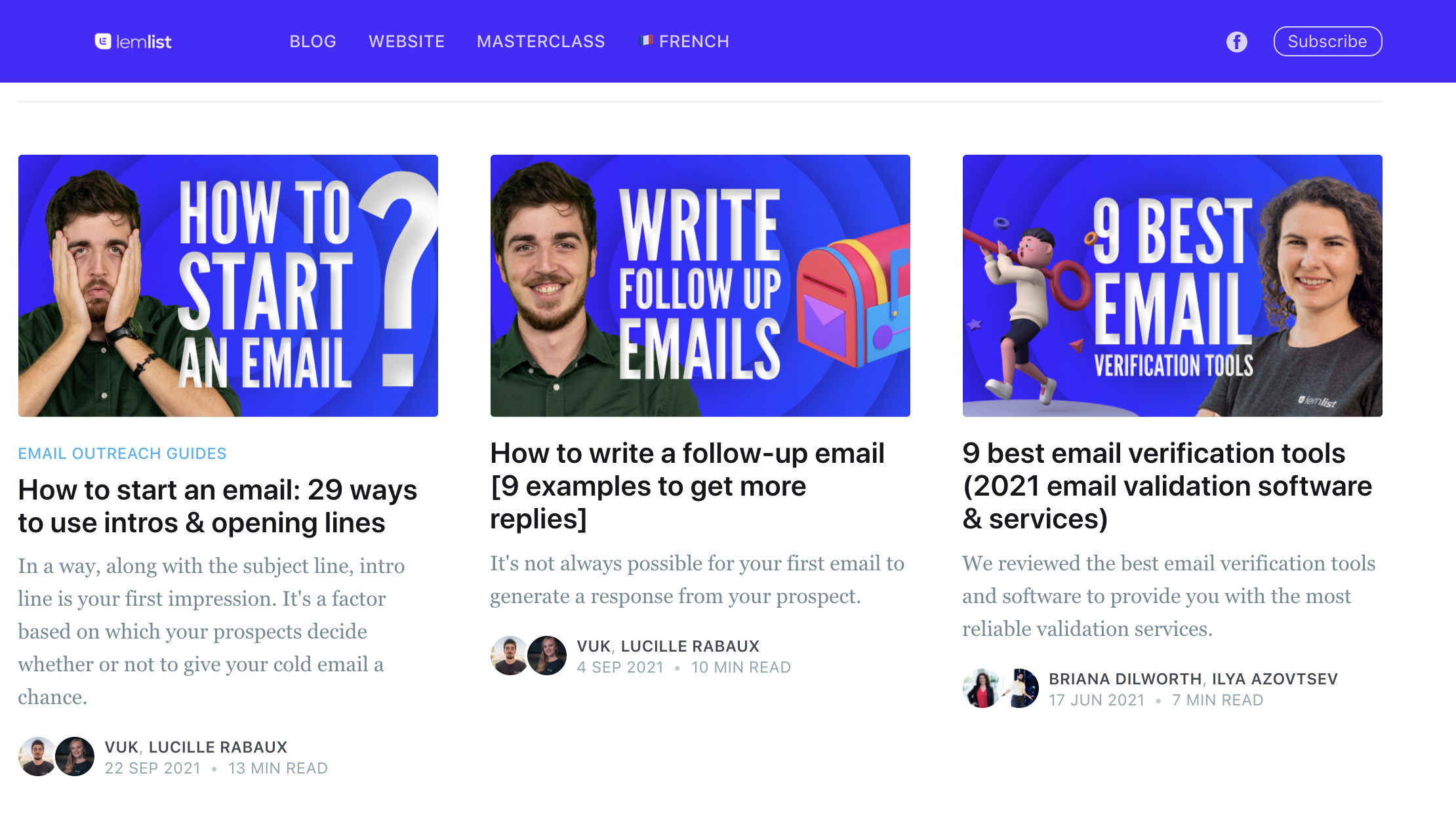
7- And finally, we decided to create a unique Masterclass. The goal was to create THE best content ever when it comes to cold email and sales prospecting. During the launch of the masterclass we actually made $100,000 in one hour.
Once we successfully educated people and provided enough value to make them understand how they can benefit from sales prospecting, it was time to convert them into paying customers.
Convert
Let's face it - you won't be able to grow to $10,000,000 in ARR if you don't have a great product.
And to build a great product you need to be able to say "NO"...often...
That's literally the toughest thing you need to learn how to do.
If you started your company, chances are that you are adaptable and know how to seize opportunities.
But to build a great product, you need to have a different mindset.
In the last 3.5 years we had a lot of opportunities to go upmarket and to start working with enterprise accounts (our ideal customer is more startups and SMBs).
But to do so, we had to considerably change our product.
To me, it was very attractive to get $50,000+ per year clients.
But was it inline with our strategy?
No.
Was it the kind of improvement that would benefit our existing users (and target audience)?
No.
As a young entrepreneur, I felt really frustrated at first to say NO to some enterprise accounts where the average deal value was about 50 times higher than our current deals.
I had done the hardest part of getting a juicy deal... But my two technical co-founders didn't want to go down that road of constant custom development, which drove me crazy 😅
The truth is, I was wrong.
Actually, thanks to my two technical co-founders, it prevented me from making many similar mistakes. They made me realized that making considerable changes just to sign a few deals, that wouldn't benefit our tens of thousands of users, would only make the product worst overtime and that we needed our product roadmap to be aligned with our overall strategy.
They were right.
If you want to go enterprise - do that but be solely focused on this target.
If you are already focused on startups and SMBs - stay focused on them.
Focus will save you a lot of time and frustration 😇
Now that you're focused, where do you actually get the best feature ideas from?
In our case, it came from 3 different sources.
1- From the thousands of conversations we have each week with our users on intercom. All feedback are sent to our product manager who can then check the occurrence of a feature request and discuss its impact.

2- During some coaching sessions from our sales team or during the Masterclass.
3- Directly from our community.
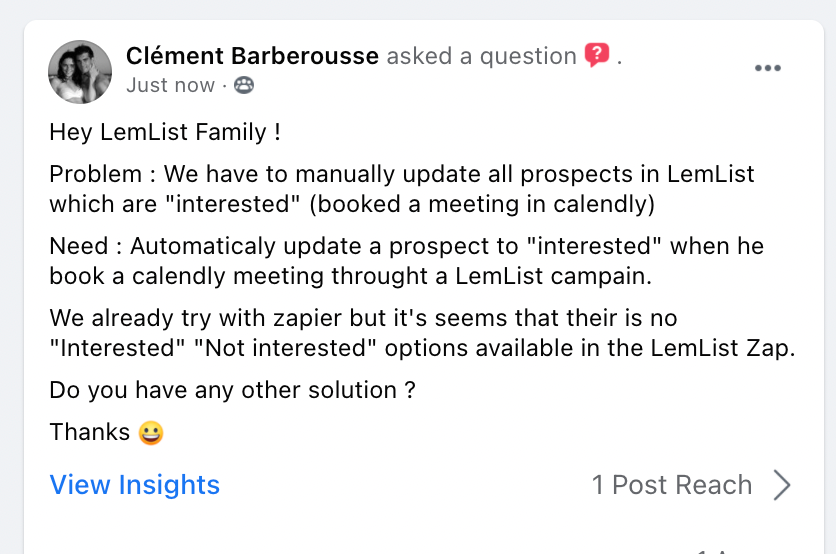
The biggest mistake a founder can make is to fall too much in love with their product.
All along the way, we've been listening to our customers and making sure to really understand their pains and needs. No hacks here. Just pure dedication.
After we launched our masterclass, I decided to offer coaching sessions.
100 in total - in just 2 weeks 😅
It was extremely intense. But I learned a lot. And to be honest, I don't know a lot of CEOs with a $10,000,000 in ARR SaaS company that would do that. I'm not saying this to brag, but just to make you realize that doing these simple things can actually make you stand out.
Similarly to how we treat all our customers. We have heavily invested in our support team in order to treat every customer as a VIP. It just takes dedication and commitment.
Retain
When you're focusing on startups, scale-ups and SMBs, retention is usually the hardest part, for 2 reasons:
1- Most startups fail. Which means that when you focus on SMBs and startups your customer's average lifetime will always be shorter than with enterprise accounts.
2- Smaller businesses are more price sensitive, which means that your average customer value is smaller so you can't invest as much in user onboarding.
So how do you make sure to retain your customers?
It's a mix of all of the above but it comes down to one single thing. If your users get good results with your product, then they will keep using it.
That's why, asking yourself how can you make them more successful is the best way to reduce churn and increase retention.
Most people will tell you to focus early on retention. I think that it depends. In some cases it's not necessary. Not that churn is not important. But simply that the product you develop a few months in will be very different from the one you'll have after 3 years. As you develop your product, you should make it stickier. For us, it came down to integrations. The better our integrations were - the more people sticked around.
We also look at churn by user segments. Sometimes, your overall churn will be high, but if you can identify a segment that has a retention rate higher than 100%, and you focus your efforts on this user segment, growth will come much faster.
Being lucky enough to experience this exponential growth is definitely exciting but it was not always sunshine and rainbows...
How did we almost kill the company, twice?
I know that it sounds scary... but the truth is that every single company has its ups and downs, even when you're experiencing exponential growth...
The two times we almost killed the company was for the exact same reason: Founders clash 💥
Let me explain... From day 1 our DNA has been to be "doers" and not "talkers". My two co-founders handled the tech side of things while I was handling the business side.
As we grew, we realized that we actually never really worked together. I was defining the mission & explaining the vision alone since the only time we were talking was to deal with the product.
As the company grew and as we hired more people, we realized that our founders misalignments impacted the team spirit.
Twice over the last 3.5 years, we thought we wouldn't be able to work together anymore... That's why, we decided to start working with a coach.
We spend hours working TOGETHER on communication to understand each other's point of view. We decided to talk about everything. And when I say "everything", I mean every single topic that we kept to ourselves, thinking that "it wasn't important" or that "it could wait". All these topics that we kept to ourselves because we thought that "business comes first" and that, we're growing so fast that we have 1 million other more important things to do...
In the end, the relationships you have with your Co-Founders is the #1 thing to focus on. If the relationship is solid and you are fully aligned, then the entire team will be aligned as well and everything will be much smoother.
So what exactly has changed:
- We spend a lot more time together outside of work. We've realized that the more we know each other on a personal level, the more we understand each other.
- We meet much more often to talk about the vision, the big picture, and to make sure we're aligned at all times.
- We centralized all the resources and processes that can benefit all departments (like HR for example).
- We meet on a weekly basis with the "Heads of" each department to make sure that our founders alignments are always passed down to each department.
- We see our coach on a regular basis to make sure that any frustration is dealt with in a safe environment.
It's always easier to talk about all the things that we did well but the truth is that if you want to do a few things right, you need to do a lot of things wrong... Along the way, we made a lot of mistakes and some could be relevant to share with you.
What is the one mistake I wished we didn't make?
When building a tech company, you think that your growth is about your product, your marketing, your tech, etc... All of that is true. But it all comes down to one thing: the people your hire.
The people you hire are the foundation of your business. People are what makes a company succeed or fail.
We've always considered all the people we've hired as part of our family.
And when your company is growing really fast, your family can also grow much faster.
Unfortunately, the company growth and the personal growth are two distinct elements. And we failed to understand that at first... But before I dive deeper into this concept let me share why it's a mistake that a lot of founders are making... It comes down to "the evil ego" trap.
The bigger your team is, the more people outside your company will think that you're becoming "a big deal". That social recognition, and status change can push you to always hire more. The bigger, the better. If I tell you that I'm running a company of 2 people, you will probably think that it's a very small business. If I tell you that I'm running a company of 100+ people, you would think that I made it BIG time. I've seen too many founders focusing on the wrong metrics. Whether it's the amount of money you've raised or the amount of people in your company, all of that is just fluff. It's an awesome ego boost but that's it.
Any team can be broken, any culture can be "diluted" if people don't fit anymore.
Failing at measuring people's growth and passion overtime resulted in a lot of misalignments and miscommunications. When thinking about the future, we realized that we had to let some people go... Even if everyone tells you that over time it is something that is beneficial for all parties, firing someone is still the worst part of the job... We did our best to make smooth transitions for people and help them find new jobs, where they really fit and are passionate about.
My key takeaways were:
- Make sure to have a very well structured hiring process to filter people
- Always set up clear objectives that are measurable so you know whether or not people are a good fit
- If you have a doubt, there's no doubt
- Being a fit goes both way
Going through the ups and downs is what makes the journey so challenging and intense. What matters the most is to follow your gut as much as you can and try not to follow the hype and FOMO along the way. If you need to stop hiring because you want people to level up: DO IT.
YOUR COMPANY, YOUR RULES.
How do we plan to build a billion dollar company in the next 4 years?
Going back to multiple projects?
In September 2020 I announced that we sold one of our SaaS project in order to focus solely on lemlist. Even though the acquisition made sense at that time, we always had in our DNA the will to grow multiple projects at the same time.
After spending a lot of time thinking about it, we finally structured ourselves both on the technical and business side in order to be able to manage multiple projects under lempire. In 2022, we will launch at least 2 new SaaS products (one being lemverse - the other being a secret project 🤫).
Hiring 25+ A players in the coming months?
In order to continue our hyper growth, we have decided to open a lot of new positions for everyone who wants to work in a team of smart and passionate individuals. More than 25 open positions to build the future of relationships 🚀
Launching the biggest bootstrapped community?
In my opinion, bootstrapped companies don't get enough press. I'm not against fundraising but I feel like the headlines are only about the largest amounts raised... As bootstrapped entrepreneurs, we have the power to help each other succeed if we gather ourselves into a community.
That's why I've decided to launch the coolest selective bootstrapped community where we can share our latest tips on growth strategies and support each other along the way. To get in, you simply need to apply here and someone from my team will reach out 🚀
Numbers?
Crossing $10,000,000 in ARR was something we thought was impossible. Especially without any funding and a capital of $1,000... I felt like our ambitions (as founders) grew at the same time as the company was evolving. I feel like it's only when you cross the $10,000,000 mark that you can see the road to the $100,000,000 in ARR.
That's the goal we have set for ourselves for the next 4 years. We will need help of course so if you feel like it - sharing this article with someone who could benefit from it would be lemazing 😘
If you want to ask me any questions, you can connect with me on LinkedIn or via email at guillaume@lemlist.com 🚀

